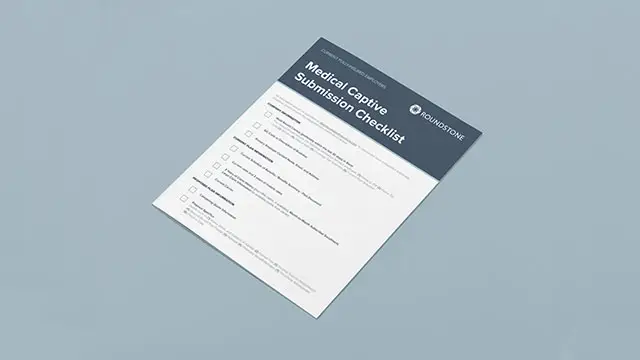If there’s one thing that employers and their employees have in common right now, it’s the deep acknowledgement that the only thing constant is change. What else can the universe throw at us?
And yet we persist. Thank goodness for all of the innovators, problem-solvers, and creators out there. It’s reassuring to witness the ingenuity and determination to keep living and working in the most connected way possible while doing all we can to stay healthy.
Most employers want to give their employees great health care benefits simply because they care. But now, it is also a matter of survival. Attractive benefits are required to recruit and retain A-players in this competitive labor market. But with the cost of employer-sponsored health benefits higher than ever, this noble objective becomes even more complicated. According to the 2021 Kaiser Family Foundation’s annual report, average annual health insurance premiums are $7,739 for single coverage and $22,221 for family coverage – a 54% increase over the past 10 years. It’s even worse for employees who saw a 71% increase in their premium contributions. As a result, household income has actually declined over the past 10 years. And now we’re seeing the impact of inflation. No wonder employees feel more stressed about their finances.
So what can a caring employer do? The key is alignment. When you want to right a turbulent situation, it helps to have everyone rowing in the same direction. When employers and employees are working together to be smarter health care consumers, when employees are less passive and more active, when there is a “why” behind the health plan design and everyone understands it – only then can you start to take control of your health care spend and change the trend.
The best way to beat the over-complicated health care system is for employers and employees to unite as health plan stakeholders with a mutual desire for quality, affordable health care for all.
Alignment and control go hand in hand. To allow alignment to happen, you must have a health insurance solution that gives you control. Control requires access to data for insights on claims spending that allow for proactive cost management solutions. Control delivers flexibility in plan design that suits your employee needs, and allows you to be agile and responsive, not stuck with a plan you can’t change. During the peak of the pandemic, for example, many companies that were self-funded were able to easily shift to digital solutions and adjust their plans as they needed. Most importantly, they were able to pocket the unspent premiums from the lower utilization of health care services, whereas those with fixed cost insurance products got nothing in return. Data insight and flexibility are great benefits provided by self-funded health insurance.
Alignment and savings also go hand in hand. Self-funded employers can implement well-being programs and back them up with incentives for employees to participate. Whether it’s a bonus to get a vaccine, a discount on employee contribution for visiting a primary care doctor, bio-metric screenings, or rewards for participating in activities like corporate challenges, savings from a healthier lifestyle should benefit both the company and the employee. It’s essential that you link these programs to your “why” and strive to make health and well-being a core value integrated into the workplace culture.
The best way to beat the over-complicated and dysfunctional healthcare system is for employers and employees to unite as health plan stakeholders with a mutual desire for quality, affordable healthcare for all. Align and win.
Crafting Appealing Self-Insured Plans That Address Workforce Dynamics
The pandemic’s disruption of employees’ personal and professional lives has prompted employers to refocus their benefits offerings according to new work-life integration needs while keeping their benefits costs in check. The following trends are among those guiding self-insured employers to reframe benefits plans and create a more competitive workforce advantage.
Rising Health Care Benefits Costs
According to Mercer’s 2021 Annual Survey of Employer-Sponsored Plans, health benefits costs increased 6.3% in 2021. The jump was attributed to higher plan utilization, or “catch-up care,” COVID claims, high-cost drug therapies, and inflation of health care. The survey expected a more typical increase of 4.4% in 2022.
Small Businesses Feel the Pain
That same survey found that smaller employers experienced the highest cost growth in 2021, with an average increase of 6.3%, followed by a 9.6% increase among employers with 50-500 employees and a 5% increase among employers with 500 or more employees.
Financial Relief
Employers became more concerned about their employees’ financial well-being in 2021. On a 10-point scale, with 10 being the highest, about 34% of employers rated their concern level at a 9 or 10, which edged up one-quarter from previous years, according to Employee Benefit Research Institute’s 2021 Financial Wellbeing Employer Survey. Companies have offered different incentives to help address employee financial stresses brought on by the pandemic, including allowing employees to access third-party emergency funds or short-term loans through payroll deductions.
Benefits Matter
A 2021 survey of 9,600 U.S. employers at large and midsize companies revealed that while pay remains the most compelling reason on whether to stay or leave a company, health and retirement benefits matter in career decision-making. In fact, an increasing share of employees surveyed in WTW’s 2022 Global Benefits Attitudes Survey would be willing to pay more for their benefits. About 59% of employees would pay more for better retirement benefits, an increase of 9.3% in 2020, while 46% would forego a pay increase for a more generous plan, an increase of 28% in 2020.
A Dynamic Benefits Landscape
U.S. employers are working through decisions of whether to require employees to return to the office or continue to allow for a flexible hybrid model that enables remote and onsite work. The recent surge in gas prices has thrown another wrench into the dilemma; however, this challenge presents employers an opportunity to differentiate themselves with more diversified benefits offerings that help attract and retain employees. Employers that have offered to help with some form of gas price aid have taken a variety of approaches, including permitting flexible work schedules and allowing for telecommuting, according to the Society for Human Resource Management.
SOURCES: Employee Benefit Research Institute, Mercer, Society for Human Resource Management
Originally published in Crain’s Cleveland Business, May 14, 2022









